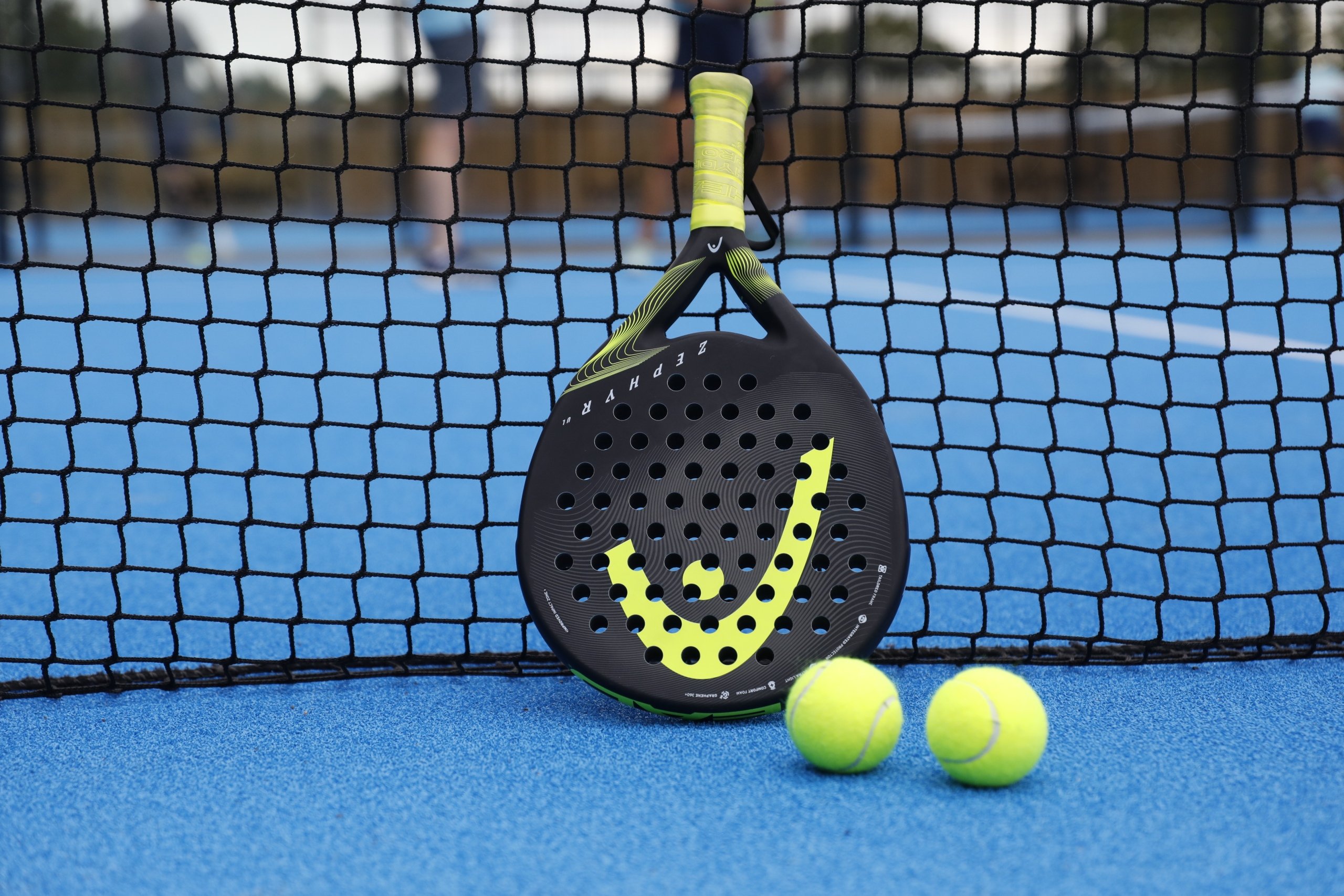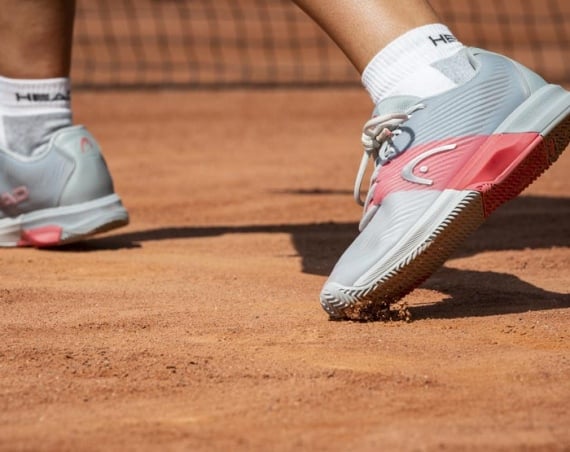Padel is one of the world’s fastest growing racquets sports. It’s currently played by over twenty-five million people worldwide – and its popularity is rapidly increasing in the UK.
Ready to find out why so many people are falling for Padel? We’ll explain what you need to know.
What makes Padel tennis different from traditional tennis?

- First off, there’s the court: it’s half the size of a normal tennis court.
- Then there’s the enclosure: this is framed by either Perspex or wire. Like in squash, the framing means you can hit the ball against the rear or sides of the court, in attack or when returning.
- Next there are the ‘Padels’ themselves: made of plastic and foam, they’re kind of like giant table tennis bats and can deliver impressive force while being relatively light to hold. Only underarm serves are allowed in the game, although once the point begins, you can use whatever stroke you want.
- The balls are adapted too: in order to reduce their pressure. In fact, most amateur and club games use standard tennis balls, which they de-pressurise with the help of a needle.
The combination of the smaller playing area, and the similarities to squash in allowing the back and side walls to become part of the game, gives Padel much more speed.
How does Padel work and what are the rules?

Padel is tactical, exciting and really addictive. It’s a low-impact, high-energy cardio workout that can be enjoyed by pretty much everyone.
- The scoring is identical to tennis.
- In Padel, all play begins with an underarm serve from the right service court into the opponent’s court, diagonally across.
- The server must allow the ball to bounce once before hitting it and the ball must be hit at or below waist level.
- The server must keep at least one foot on the ground when hitting the serve.
- The server’s feet may not touch or cross the service line while serving.
- Contact with the ball across the centre service line is allowed.
- The serve must land in the opponent’s service box.
- If the ball bounces in the service box and strikes the side or back wall, it is a valid serve and must be played by the opposing player.
- If the ball hits the net, then bounces in the service box and strikes the side or back wall, it is a let and must be replayed.
- If the ball lands in the service box and hits the wire fencing, it is considered a fault.
- If the ball hits the net, then lands in the service box and hits the wire fencing, it is considered a fault.
- Like tennis, in Padel, you get a second serve.
- What classifies as ‘in’:
- The following are allowed:
- The lines on the court are considered in play only during the initial serve. Otherwise, they are not a factor in determining the outcome of each point in the game.
- All players are permitted to play a ball off any of the walls on their side of the court.
- The following are allowed:
- What classifies as ‘out’:
- The opposition wins a point if:
- The ball bounces twice in any area on your side of the court.
- The ball strikes you or your teammate while in play
- The ball hits the wire fencing, posts, or any other fixture before going over the net or landing on the opponent’s court.
- The ball hits the wire fence or walls before bouncing on the opponent’s side of the court.
- The opposition wins a point if:
Is Padel tennis a good workout?

There may be lighter bats, smaller courts and softer balls, but Padel can still give you a really good workout. The great thing about it is that even at its gentlest, it tests stamina, flexibility, and reaction times. As you practise and become more skilled, your game can become more challenging if you want it to.
Who is Padel for and where can I play?
The pace, energy and fun Padel offers makes it a great game for all ages and abilities. You don’t need to have played any other kind of racquets sport to get started.
We currently have courts in David Lloyd Acton Park, Bicester, Bristol Westbury, Bushey, Cheadle, Chigwell, Edinburgh Shawfair, Glasgow Rouken Glen, Harrogate, Manchester Trafford City, Poole, Raynes Park, Rugby, Southampton West End and York. With Padel’s popularity growing in the UK, Padel courts are coming soon to David Lloyd Cheshire Oaks, Eastbourne and Nottingham West Bridgford. This will make David Lloyd Clubs the UK’s biggest Padel provider.






